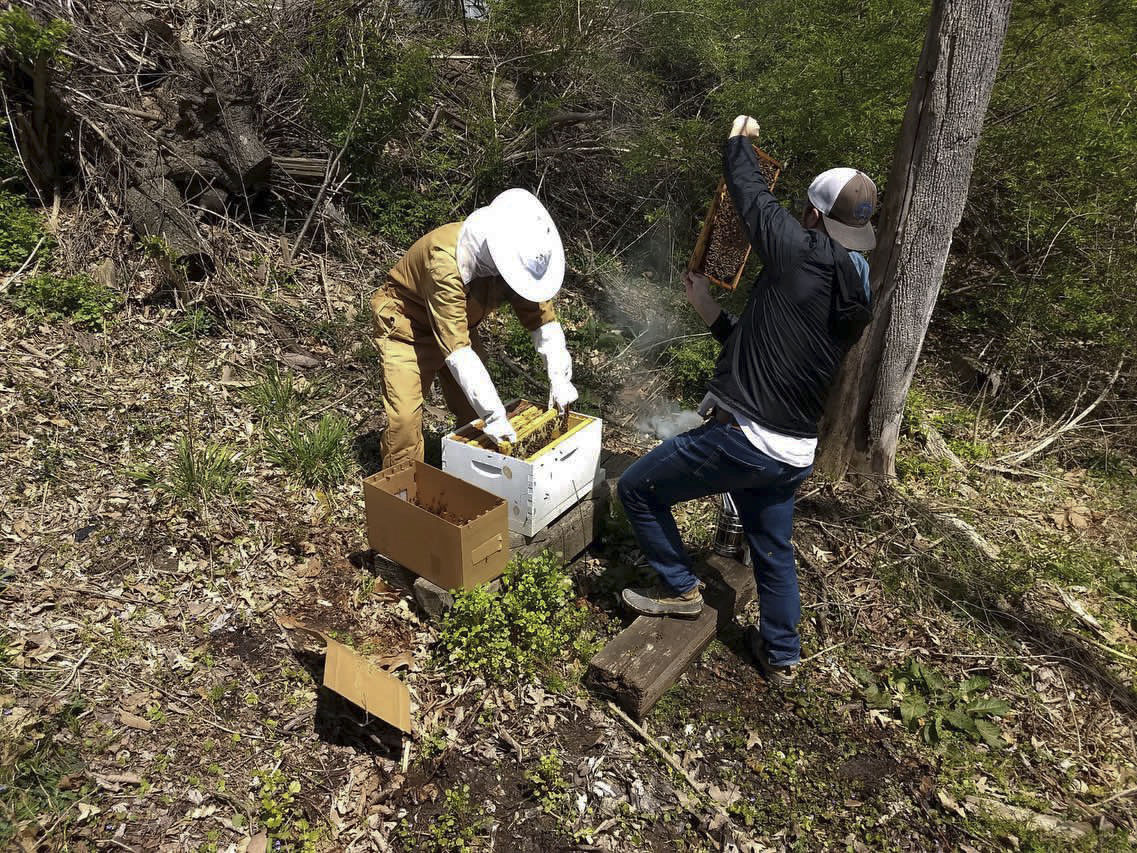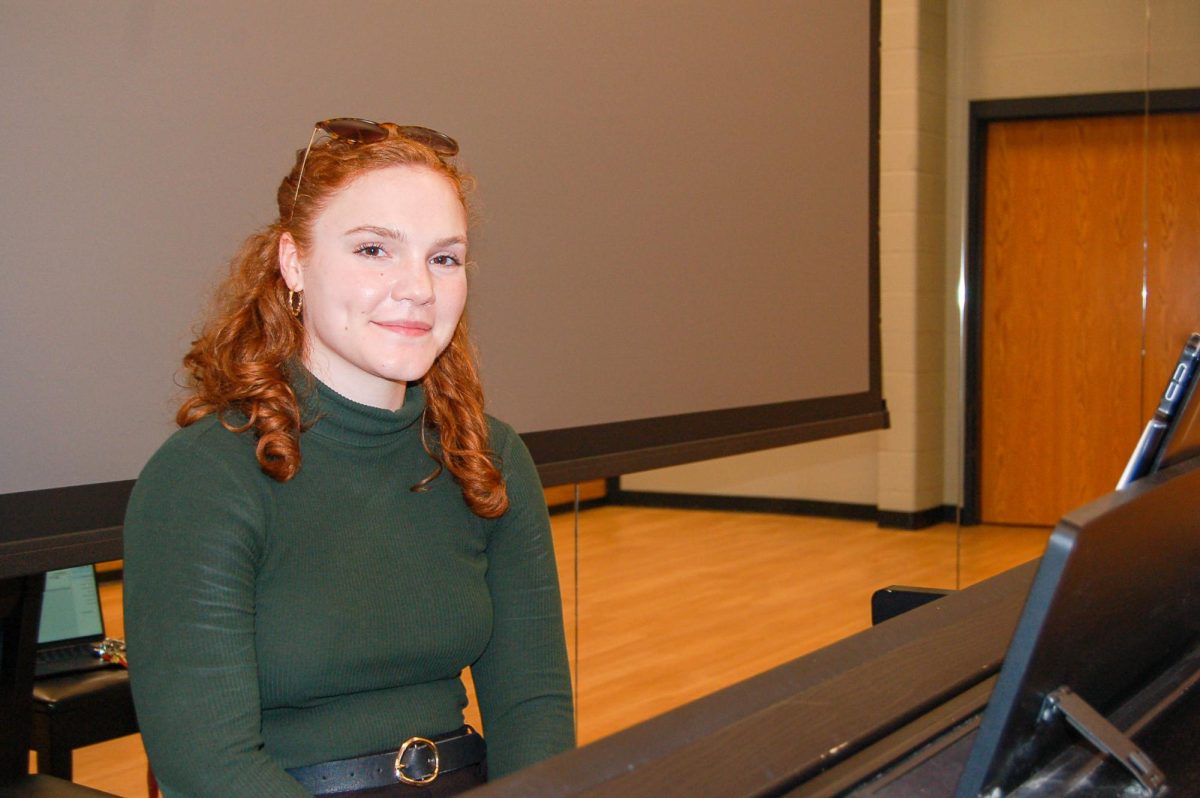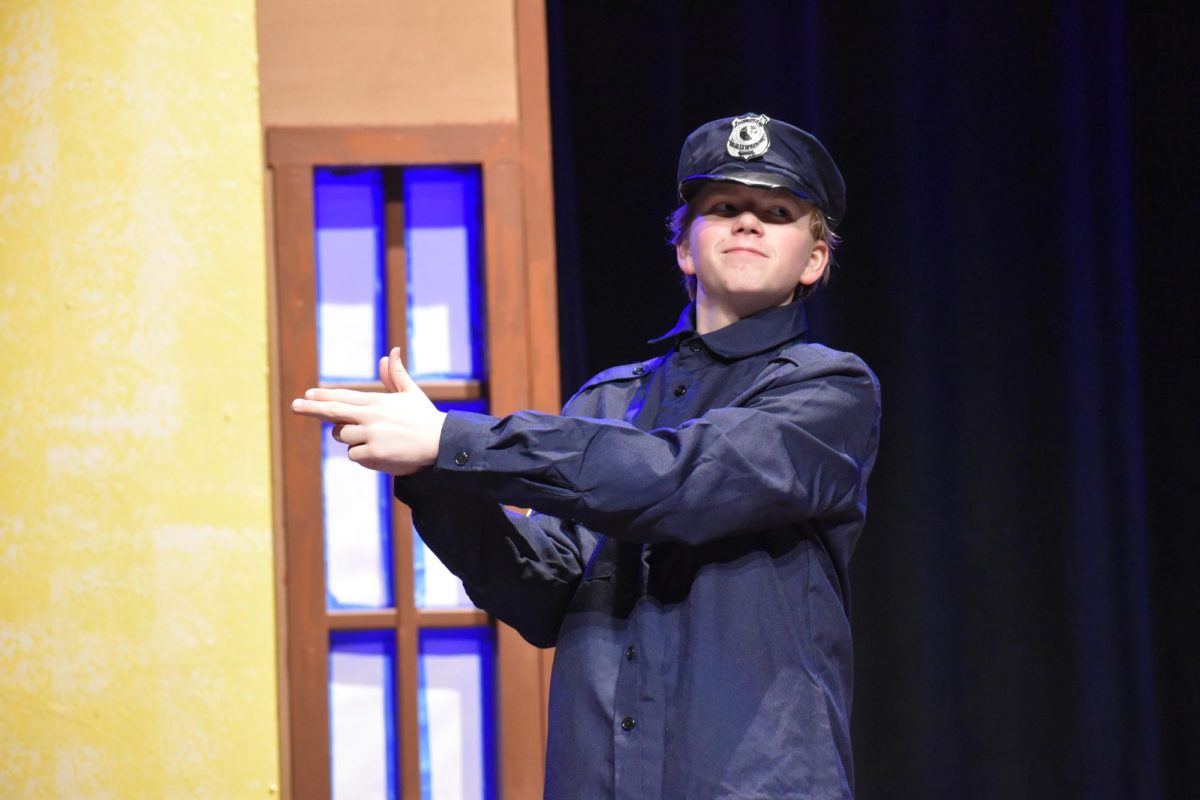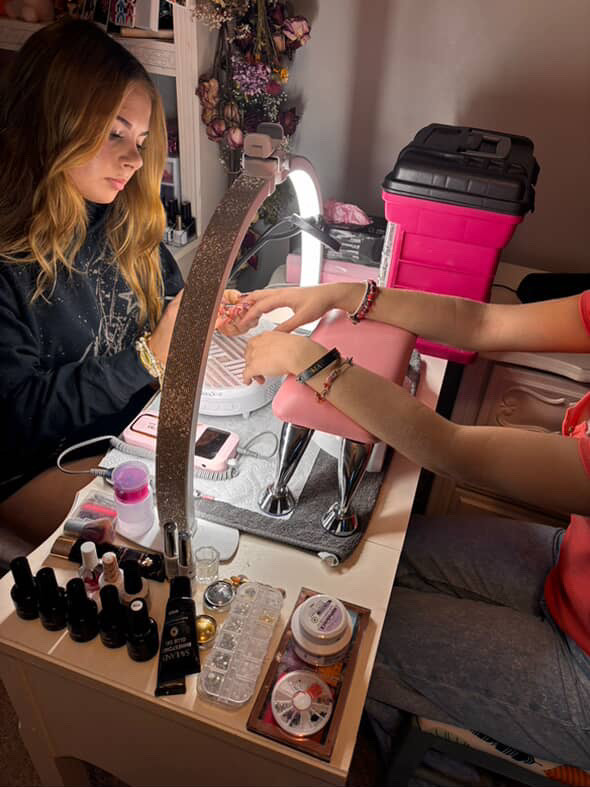With the lifting of a lid and a puff of smoke, hundreds of bees rise into the air out of their hive. Senior Henry Baas stands in the middle of the swarm, his ears ringing from the sound of buzzing around him. Protected only by an old winter coat, Baas begins to remove frames of intricate hexagonal combs dripping with honey, careful to not upset the small creatures.
Honey harvesting season has begun, and for the Baas family, that means suiting up in protective gear to begin the first steps of the extraction process. This is done by removing panels of honeycomb from the hives, then placing the honey in an extraction barrel to clean the product. Henry and his father, Christopher Baas, work together in Muncie where their hive is located, to prepare for when the sweet, amber-colored liquid is ready for removal. It was only two years ago when the pair decided to become beekeepers.
“My dad has a lot of friends at Ball State. They’re all [around] 50 years old, so they needed a hobby,” Henry said. “My dad bought two giant wooden boxes off of Amazon, and we built them during that summer. Then in late July, we had bees move into it.”
A professor in the Department of Landscape and Architecture at Ball State, Christopher works every day teaching with several colleagues, including Jeremy Merrill. Merrill has two hives of his own and inspired the Baas family to begin their beekeeping journey.
“I gave a lecture where I showed my bees in the class which I taught with Professor Baas,” Merrill said. “Then I was able to show him my bees and help [his family] when it was time to do routine maintenance on the beehive.”
According to Bestbees.com, an estimated 12.5% of adult Americans are scared of bees. Baas was originally part of that group. However, he had to overcome that fear to become a beekeeper.
“I’ve never been stung by a bee or wasp or anything, until I became a beekeeper. Of course, it was scary, not knowing what it felt like, but I knew that it would hurt,” Baas said. “It only hurt for a day and wasn’t that bad. I could get stung five times, I wouldn’t stop putting on the suit.”
Merrill too has been stung many times, but has never given up on his hobby. After being a beekeeper for eight years, he claims he has seen the impact first hand of native and honey bees through pollination.
“I like to see the bees creating something within the hive, to see them build and to watch them fly around the yard is mesmerizing. I also like getting honey made from the flowers in my immediate vicinity,” Merrill said.
Not everything goes as planned with beekeeping. Like both Bass men, Merrill, believes that interacting with bees is similar to a dance, where he has learned all the steps, but knows he has to be responsive to what the bees are doing on that day.
“Sometimes things go wrong—you lose a tool, the smoker goes out, you are just not sure what to do next—all while being swarmed by several hundred bees,” Christopher said. “This is where the adrenaline kicks in and you have to learn to relax and that everything will be fine.”
Although beekeeping isn’t always straightforward for the Baas family, they still find the experience quite rewarding.
“I like that I’m more aware about the plants, animals, and insects in and around my yard. I also like how it has given an interesting bonding activity with my family and friends as we learn how to care for the bees [and] harvest honey,” Christopher said.
Baas says beekeeping is something anyone can do. With enough space and materials, a prospective owner of bees can get started right away.
“If you are interested in beekeeping there are lots of folks to talk to. There are local businesses that sell bees and equipment near Noblesville, and countless videos to watch,” Christopher said. “You’ll find that there are beekeepers at all levels of involvement, from casual keepers, which might best describe us, to others that are in their hives weekly and harvest their honey for income.”
After you decide to start your beekeeping, there is one last step after gathering the materials: overcoming any fear you might have.
“Don’t be afraid to put on the suit,” Henry said. “It looks scary, hundreds of bees flying around you, but it’s not, and that’s just something people need to learn, to take a risk.”










